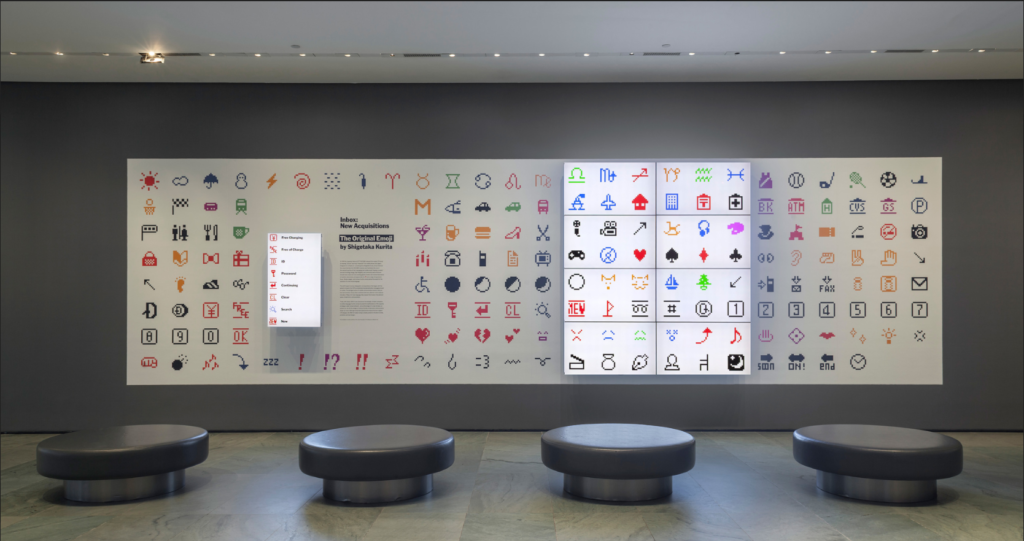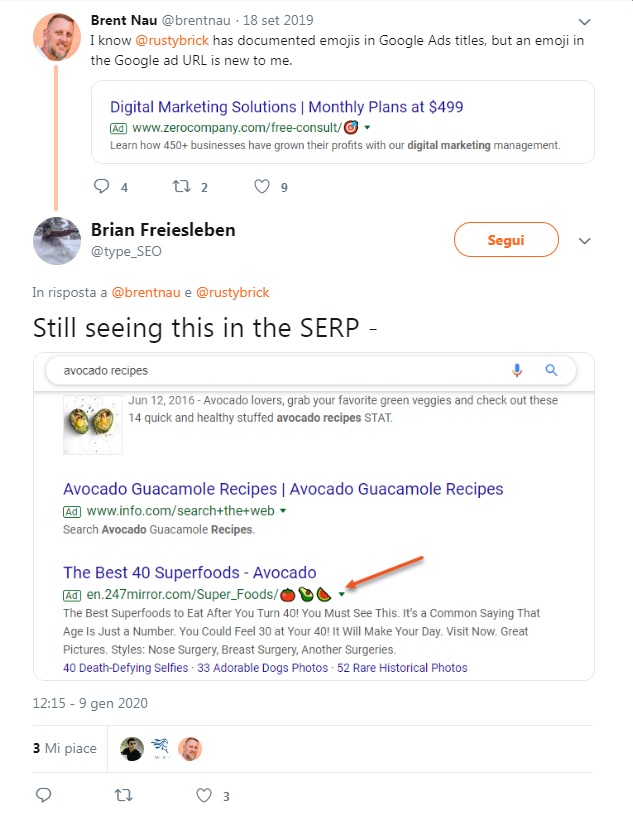Emojis for Google and SEO: what they are and what they are for
To spanish people it has been the word of 2019, they become a work of art at the MoMA, for the past six years now there is an entire international day to celebrate them and even Google is experimenting their use on SERPs over and over again, both on titles and URLs, no less: we are talking about emojis, the funny little faces that globally spread from mobiles and smartphones all over the Web, downright imposing themselves as a new quick and direct communication tool.
What are emojis
The original origin of these yellow faces is still pretty controversial: according to the currently most credited theory, the creation of emojis dates back to late ’90s in Japan. To be precise, the invention of the first set of emojis is owed to SoftBank company, that in 1997 launched on the japanise market a kind of phone able to support 90 different pictographs.
In 1999 here it came the famous set of 176 emojis created by Docomo and Shigetaka Kurita, long thought to be the absolute first, sized 12 pixel per side and inspired to the manga culture, chinese characters and road signs, and that was then implemented inside the japanise i-mode system, a web platform of some sort that used to connect mobile phones to the Internet.
And that exact original symbols grid became a true and proper work of art displayed in 2016 at MoMA, the Museum of Modern Art in New York, in a temporary exhibition dedicated to all new forms of art and communication. “If you think about it, we cannot live without emojis today”, said Paola Antonelli, MoMA’s senior curator of architecture and design when introducing the artwork: in less than twenty years, the little faces revolution was finally complete!
What does the emojis mean
Image, character and writing: the term “emoji” was born from the merge of the japanise kanjis identifying these three elements, that indeed describe the whole sense and use of these symbols, a sort of “writing by images“.
Emojis are pictograph symbols, generally shaped like a comic, used within textual conversations in order to express ideas, feelings, moods and character. In fact, they represent faces, weather conditions, vehicles, tools, buildings, dishes or beverages, foods, plants and animals or activities, emotions and so on.
In a way, emojis are the evolved form of emoticons, that instead are a string of textual characters (mostly punctuation symbols) that since the ’80s have been used to recreate the main human facial expressions mimicking a specific feeling on online chats and not only.
What are emojis for
As highlighted by the MoMa curator, in the past twenty and more years these symbols have successfully crossed japanise borders to spread all over the Web and beyond. Originally born as an element with which break the “communicational and educational barriers that used to paralyze japanise people”, according to the words of Shigetaka Kurita, over time emojis have become a form of perfect communication to the quickness of the Net and of the instantaneous Whatsapp (and similar apps) chats.
And Google surely noticed it…
Google ADS Emojis directly inside the URL
The latest piece of news on the field has been reported in the United States: a few days ago, a user saw in SERP an ad labelled as Google AD that included some emojis directly inside its referring URL. It is a very peculiar thing, potentially inconsistent with the actual Google ad policies (according to the interpretation given by Barry Schwartz on Seroundtable), that could offer though a kind of edge in terms of CTR toward the site, as it seems to be more alluring and enticing to users compared to the classic link.
Emojis in SEO titles and meta descriptions
Emojis already made their debut in SERP, though: since 2017 Mountain View is carrying on several experiements, and has even implemented a service of image search based on these symbols, that are then as indexed as any other multimedial resource (we were also talking about this right after the Google Webmaster Conference, last November).
Even more useful on a SEO perspective, emojis can also be used (and showed) inside Research’s snippets, if they are “pertaining, useful and fun”: this means that a site can use graphical symbols on fields such as SEO titles or meta descriptions, if its targeting analysis reveal that these specific communication tools can promote clicks from users (and, consequently, the click-through rate) or even simply as a method to differentiate yourself from competitors and attract more and more curious looks.
Why using emojis?
Clearly, among the most accustomed to the use and comprehension of emojis are the younger ranges of age: 68% of millennials, according to a study made a few years ago, claimed to feel more comfortable “to express their feelings using images such as emojis”, that reveal themselves, then, as a way to humanize the message, prove oneself trendy and reinforce brand awareness with a very specific characterization.
How many emojis are there?
But which emojis should we use? the Standard Unicode page storing all the emojis – and even distinguish them by communication channel, from Apple to Google, from Facebook to Twitter up until Whatsapp – counts 1742 emojis updated to the current v12.1 version, but there already is the list of the v13.0 beta version that reaches 1809 of them.
In short, there are almost 2000 different symbols, increasingly extended and inclusive (a very modern tren, so to avoid any kind of discrimination or manipulation of the symbols), and over 90% of people communicating through digital channels use at least one of these elements. In the UK, among the most popular symbols we have the face with tears of joy, followed by smirking and flushed face (on Twitter) and the evergreen heart emoji on Instagram.
“Heavy weights” on the field are, obviously, social medias: on Facebook are daily posted over 700 milion pictographs while on Messenger chat over 900 milion emojis are daily sent without any text. On Twitter we exchange every day about 250 milion emojis, at a rate of 3.2 billions per year, and on Whatsapp numbers are even more mind-blowing.
All the aknowledgements for these pictographic symbols
Not a mere cultural phenomenon, then, nor a temporary trend, but rather a true and proper communication form, so much more direct and quick, suitable to the promptness of new medias: that is why emojis are gaining more and more recognition on a global – and often cultural – scale.
Already back in 2015, the renowed Oxford Dictionary chose an image as “word of the year”, the Face with Tears of Joy emoji.
A few weeks ago, the Fundación del Español Urgente elected emoji as “2019 word of the year” of the spanish language becaus it is “unquestionable the impact of this non-word on our communication with others, that brings nimbleness and brevity to the written form, allowing to add further hues of gesture and intention that would otherwise be lost”. Moreover, these pictographs are “maybe the closest thing to a universal language that humanity ever created”, the foundation closes its reasoning.
There is also a date to highlight in red, since 2014, in which we celebrate the International Emoji Day: it happens on the 17th July of every year, a day exactly picked because it is the one appearing inside the calendar graphic symbol, universally recognized by Standard Unicode.
In the end, back in 2017 was globally released on all movie theaters around the world the movie Emoji, an animation movie with quite good box-office results, but rather awful feedbacks from criticas: as a mere example, we would like to mention the four Razzie Awards won within the same year and the Hollywood Reporter ranking list about the worst movies of the 2000-2019 decade, where “Emoji” stands on the absolute fourth place.




